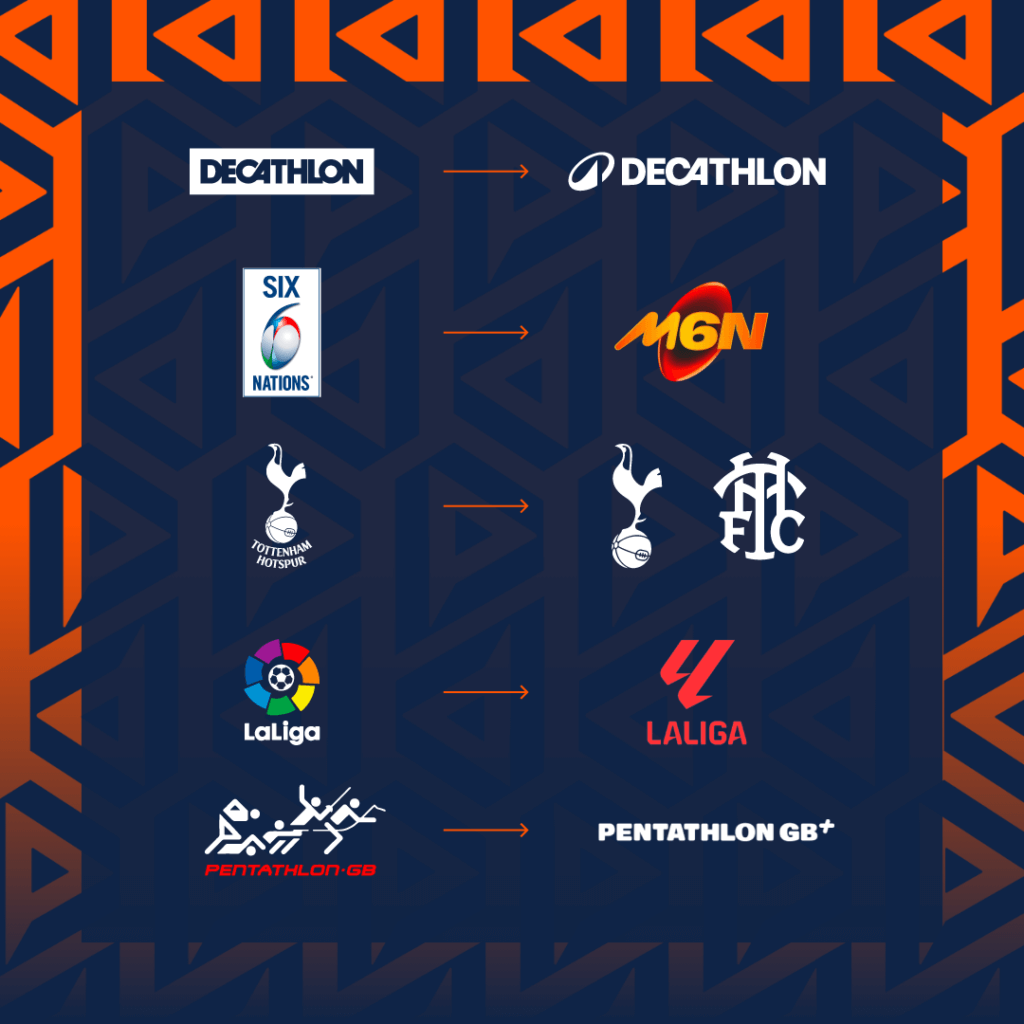In 2023, sports marketers need to continue to embrace the digital revolution and how this is shaping the behaviour of sports fans. How are audience habits changing? And what opportunities does this create in the world of sports digital marketing?
Audience habits in 2023
Social media
The role of social media in sports digital marketing, and across other industries, continues to grow. In the UK, the buying decisions of 42% of Millennials and 53% of Gen-Z consumers are thought to be influenced by social media personalities1.
Sports fans are no exception – 47% of TikTok users say they have purchased something after watching their favourite sports influencers or professionals take part in TikTok’s popular trends and challenges.
Smartphones and future tech
In recent years, consumers have been introduced to new technologies in mobile-first digital marketing, such as virtual reality (VR) and 5G smartphones. In the summer of 2022, the sports industry took full advantage of these new experiences during Wimbledon. Sponsor Vodafone showcased its 5G connectivity using the latest in VR technology.
As more sports fans become accustomed to immersive experiences on their smartphones, the demand for more innovative, mobile-first tech in sports marketing is likely to increase. Deloitte Global estimates that the global VR market could generate up to £6 billion in 2023, and that 5G smartphones will become more widely available, with the first below $100 (around £84) going on sale2.
Second screening
If you’ve ever sat in front of your TV while scrolling on your phone, you’re one of the many people who ‘second screen’ – shift your attention between multiple screens and the different entertainments they provide. According to FIFA, 83% of football fans watch TV while using their smartphone3. For sports marketers, the challenge has become how to keep fans engaged.
In the past few years, this has been especially true for Gen-Z and Millennials – the younger target audiences who are traditionally more comfortable using digital technology than their predecessors. Yet for digital marketing in 2023, it’s important for marketers in all industries to not make assumptions – research suggests that older demographics are increasingly embracing second screen usage4.
Video-on-demand streaming
Thanks to the COVID-19 restrictions, around-the-clock home entertainment became a huge priority in 2020. This led to a significant increase in subscription video-on-demand streaming services (VOD), and by Q3 of 2020, VOD was active in 60% of UK households – an increase of 47% on the previous year5.
COVID-19 lockdowns may now be behind us, but statistics from 2022 suggest the appetite for VOD lives on5. One 2022 report reveals that children are now more likely to watch on-demand streaming services than live television6. This is an important insight when looking to the future of digital marketing – audiovisual viewing habits spearheaded by the pandemic have become permanently altered for future generations of sports fans.
The cost-of-living crisis and multiple subscriptions
It’s now normal for consumers to subscribe to more than one VOD service per household. In UK homes last year7:
- An average of 10 different audiovisual services were used to watch TV.
- 75% watched audiovisual content on subscription VOD services.
- 68% used free video sharing services.
- 60% used free-to-air channels on a TV set.
- 56% used free VOD services
However, in 2022 the cost-of-living crisis resulted in a significant number of multiple subscription cancellations. As UK residents tightened their purse strings, they ended over two million subscriptions to popular services – such as Netflix, Disney+, and Prime Video8.
The question in 2023 is whether or not this dip in the UK streaming revolution will bounce back. On the one hand, it’s the first significant decline since streaming became popularised a decade ago. Multiple subscription households fell from 17.12m to 16.24m, 2021 to 2022, and the first three months of 2023 have continued this trend – the number of people planning to cancel at least one VOD subscription rising by almost 10%8.
One the other hand, it’s important to remember that multiple subscriptions still remain very much in vogue. The majority of households continue to subscribe to more than one, and the average is 2.5 services per home8.
Sports industry opportunities
What do these trends mean for the sports industry? The answer is simple – more digital marketing opportunities than ever before. The latest digital marketing tools can allow you to reach your target audience in every digital environment they engage with. To adapt to the multi-screen, multi-device, multi-streaming, and multi-platform digital ecosystem in 2023, sports marketers need to:
- Track cost-of-living trends and habits – the 2023 economic landscape could change quickly.
- Be data-driven and knowledgeable of the devices their target audience use, as well as how and when they use them.
- Use the latest marketing tools and content trends to engage audiences.
- Deliver hyper-targeted and highly personalised campaigns across devices.
- Think mobile-first, seamless experiences – capturing eyeballs on smartphones has never been more important to sports fans.
- Keep a laser focus on the customer journey on and across devices.
- Track audience engagement throughout the entire customer journey.
- Be brave and adaptable – don’t be afraid to experiment with new content forms and technologies. If something doesn’t work, learn from the data and adapt your approach.
Invest in digital marketing
At Digital Playmakers, we believe there’s never been a better time for sports brands to invest in digital marketing. In 2023, it’s not enough to have a highly functional and engaging website – organic sources of website traffic are decreasing, thanks to the rise in digital platforms as well as search engine algorithm changes.
Having a comprehensive digital marketing strategy that utilises paid/performance digital campaigns is more important than ever before. For example, using both Google and social media to drive more traffic to your website or app can be the most budget-friendly, efficient, and effective strategy.
Social platform CPMs (cost per thousand impressions) offer valuable targeting functionality. Although average CPM costs continued to rise in 2022, Digital Playmakers share nine tips to help keep your Facebook CPM costs low in 2023.
If you’d like more help making your digital marketing strategy successful, contact our team of experienced digital specialists today.


